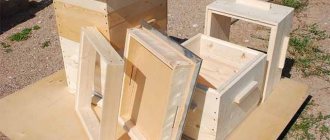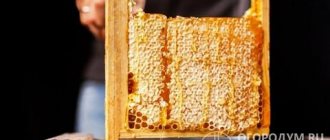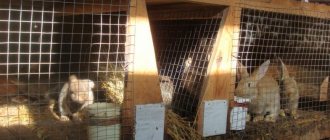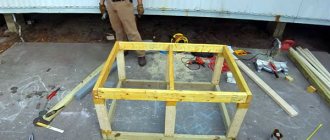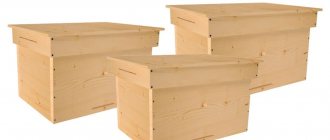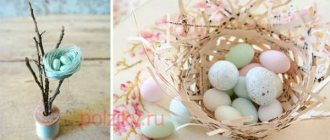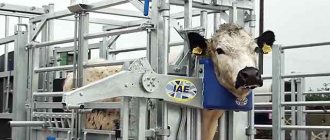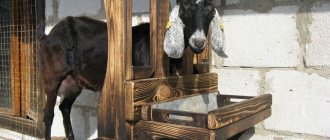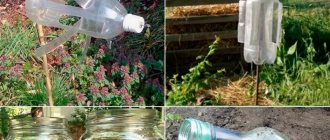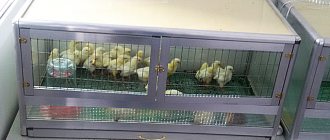General requirements
The dove stays in the nest for a long time. The incubation period for egg maturation lasts 19-22 days. It is necessary to create comfortable conditions for the female. The nest is installed in a cage or cell, a kind of house in which pigeons live. It is recommended to install the cells opposite the wall on which the perches are mounted. This will make it more convenient for the birds to fly into their house.
The cell is built to be spacious. Its dimensions depend on the size of the bird. It can be an upside-down wooden box or cage. The cage should have enough space for a bird couple, for courtship, and for a nest where the female will lay eggs. When constructing cages, it is recommended to adhere to the following dimensions:
- for pigeons with a body length of less than 30 cm, cells 60 cm long are equipped; height and width 40*30 cm;
- if the body length of an individual is 40 cm, then the length of the cell increases to 60 cm; height and width 60*50 cm;
- the length of the cage can be shorter if it is made two-story; equip a nest on the top floor; birds will live in the lower room; in this case the height will double;
- standard nest size for pigeons is 20*20 cm;
- for birds of meat production or with plumage on the metatarsus, a laying area of 30*30 cm is adapted.
The cages are equipped with sides. They serve as a roost for pigeons. There is no need to install a separate bird bar. Cages can be permanently located on the wall or portable. If the dovecote is spacious, then permanent structures are built. In a small room, it is better to consider a mobile version of bird houses. It is proposed to build the following variants of cells in which the nests will be located:
- separate rows of cells, followed by reinforcement to the wall; stationary model;
- rack with frames for nests without additional fastening; if necessary, it can be taken out of the dovecote, washed, and disinfected; more space will open up for birds in the room;
- nesting room; they are a large cage or box divided into small rooms: one contains a nest, the other contains adult birds; premises can be stationary or portable;
If the cages are multi-story rows, then it is necessary to properly make perches for them. On the first row there is enough border. The standard height is 8-10 cm. On the 2nd floor, the side is moved 5 cm forward. This is necessary so that the bird sitting on it does not drop droppings on the individual, which is located on the 1st floor. The 3rd and subsequent floors are equipped with elongated sides or remote perches: each subsequent perch is 5 cm longer than the previous one.
Pigeon breeders note that the nesting room is more convenient for pigeons. After hatching the chicks, the dividing shelf can be removed, opening up more space for the birds. There is another option: when the chicks reach one month of age, they are moved to the lower room. Adults remain in the section where there is a place for the female. This is a rational use of space in the dovecote.
More on the topic: How long do pigeons live?
The floor in each cell or in each cell, which is divided into rooms, is made of mesh. A pallet is installed under it. All dirt and droppings will go into the tray, which is washed daily. This makes it easier to keep the dovecote clean.
Adviсe
It would seem that arranging nesting sites is not at all difficult, but this matter has its own subtleties. Check out the recommendations given by experienced pigeon keepers.
- Be responsible when choosing the size of your future nest. Otherwise, it is possible that the pigeon will crush the chicks while sitting in it.
- It is recommended to divide dovecotes into 2 halves, one of which contains perches, and the other – nests.
- There are different types of frames that can be made for nests. Some are mounted on the wall, others are put on a mount in it. The first option is the most convenient; the main thing is to make very stable shelves so that they cannot tip over. However, if you choose the second option, it will be easier for you to clean and disinfect. In addition, it is easier to remove them for a time when the pigeons are not using them, and free up space in the dovecote.
- To create nests, environmentally friendly materials should be used: wood or plaster. Some people use plastic to create the frame. The environmental friendliness of the materials is important, because if it releases harmful substances, it can scare away pigeons or stop the development of pigeons.
- Consider how you will heat the birds' habitat in cold weather. Typically, heaters are used for these purposes or insulation is placed in nests and perches. If you chose the first option, then ensure the safety of the birds when using it.
- Some bird lovers make dovecotes right on their balcony. Technically, this is not so difficult, you need to install a feeder and a drinking bowl, put together a wooden insulated box with compartments for nests, and the pigeons themselves will bring the necessary twigs and blades of grass for their construction, but the neighbors most likely will not like this option - they will have forever The window sills are dirty, and the constant cooing will cause them discomfort. Pigeon keepers advise limiting yourself to one pair and keeping it exclusively at home. To do this, you can use a spacious cage from which the pigeons will sometimes come out to fly. Give them twigs and blades of grass so that they can make a nest for themselves in the cage, and while the eggs are hatching, move the male to another cage.
- If you get a pair of purebred pigeons, it will be much easier to house their chicks. Owners of dovecotes can take them home, and they may even want to buy especially rare birds. With ordinary yard pigeons, the situation is more complicated, because you may not find anyone willing to take the chicks, and on the street, birds raised among people risk becoming easy prey for any predator. But alone, pigeons in captivity can become sad and even die.
- If little pigeons are alone for at least 10-15 minutes, they begin to freeze and sometimes die. Make sure that the parents do not leave the nest for such a long time. When babies turn 8 days old, they begin to ask for food by squeaking and opening their eyes, after which their possible time spent without parental care increases. At two weeks of age, they move around quite actively, and care must be taken that they do not fall out of the nest.
Pigeons are beautiful and friendly birds that make good pets. Despite their widespread popularity, many people have a soft spot for them and strive to have them in their homes. If you cannot afford to keep a dovecote, then it is best to have one pair of purebred birds. They will delight you with their company and raise their chicks with you.
To learn about the types of nests for pigeons, see the following video.
Breeding pigeons is an interesting hobby, the history of which goes back centuries. Pigeons are famous for their unpretentiousness in food and living conditions. But when it comes to their reproduction, especially rare and unusual breeds, then every poultry farmer is obliged to take care of creating the ideal pigeon house.
Creating nesting sites in the dovecote
Pigeons living in captivity cannot choose their nesting site and building material. The pigeon breeder’s task is to create comfortable conditions for the pets to breed their offspring: to find a suitable place in the dovecote, to provide the basis and “finishing” material for building a nest in sufficient quantity for all pairs. One of the necessary skills for a pigeon breeder is creating a nest for pigeons with your own hands.
You don’t need to make the entire nest, just make the base
If the pigeon family does not like the nest, then the birds will not lay eggs this season. Example - Nikolaev individuals are extremely picky.
Don’t get carried away with creating a nest: pigeons are excellent builders and will be happy to arrange a home for the chicks. You need to make a blank form, and put sticks, twigs, twigs, and dry grass on the floor of the dovecote. The pigeon will enthusiastically build a nest, arranging it according to the rules known to it. Making a nest yourself strengthens the reproductive instinct and encourages birds to lay eggs.
Nests are placed on a specially designated, slightly shaded wall at different heights with an interval of 20–30 cm. The number of nests should be equal to the number of mature females + 1-2 extra nests: there will be fewer quarrels between birds over space.
The size of the nest depends on the breed of pigeons, but there is only enough space in it for one adult bird and its offspring. There are 2-3 eggs in a pigeon clutch. Growing up, the children will push the dove out of the “home.”
Pigeons need a nest for 2 months: the female incubates the eggs for 25 days, and then the chicks live under the care of their parents for a month until they learn to fly on their own. During the year, one pair of pigeons lays 3 clutches. At a time when pigeons are not busy breeding offspring, the nests can be removed from the dovecote.
If you scare a pigeon away from its nest, the bird may not return there.
The mating season begins in late March - early April. By this time, nest preparations should already be installed in the dovecote so that the birds have time to get used to their future “apartments” and arrange them to their taste.
Vacuum drinkers for pigeons
It is absolutely simple to build a water supply device for pigeons based on the principle of a vacuum-type automatic drinker. This can be done from a wide variety of materials. A glass jar with a saucer, plastic bottles, and other containers will do. The difference in containers will depend on how many birds need to be watered. It goes without saying that you should not build a 10 liter container for 5 birds.
A vacuum type pigeon drinking bowl is based on the simplest laws of physics. If we take a drinking bowl for a pair of birds, then to create it we will need:
- glass jar;
- plastic lid for a jar;
- 3-4 self-tapping screws;
- saucer or similar container.
The design is extremely simple. You need to take the lid of the jar and screw 3 or 4 screws into it. They need to be screwed in to such a depth that, if you place the lid in a saucer, its bottom side is below the level of the edges of the saucer. Set the screws to the same level and make a couple of holes in the center of the lid. Fill the jar with water, put a lid on the jar, place a saucer on top and with a sharp movement turn the entire structure over. They put it on the floor. The principle of operation is such that when the water in the saucer drops below the level of the lid, the next portion of water is poured out of the jar, automatically replenishing the supply in the saucer.
Instead of a can, any other design can act. If we consider plastic containers, then it is advisable to mount them on the wall due to instability.
Chick growth
Pigeon chicks
It will take approximately 30 – 35 days before the baby pigeons leave their nests:
- The behavior of babies depends entirely on the sound the pigeon makes. At a certain sound, they freeze, sensing danger and stop moving.
- If pigeons are left without their parents for 10 to 16 minutes, they become very cold and may die.
- At the age of 8–9 days, the chicks open their eyes and, emitting a thin squeak, demand food from their parents. From this time on, they can already remain without parents for a long time.
- When the pigeons are 15 days old, they are already moving well. As a result, there may be a danger of falling out of the nest.
- At 27–30 days of life, the chicks are already moving well and can leave the nest. At the same time, the kids constantly stay in a group, snuggling up to each other.
- Already at 35 days they leave the nest, but do not go far from it. They need constant feeding and constantly ask their parents for food.
- The first molt of pigeons begins at 7 weeks of life. In this case, the temporary plumage is replaced by permanent ones.
- When they are 2.5 months old, babies stop squeaking and begin to make a sound similar to cooing.
- At the age of 5 - 5.5 months, the chicks begin to show their first sexual characteristics.
- During the first 6 months, pigeons need complete and balanced feeding. This is necessary so that the parents have enough strength to maintain their health and feed the chicks.
DIY pigeon nests - on video:
Useful tips
In order for the health of pigeons to remain normal, it is necessary to follow some recommendations for caring for these birds:
- As soon as the birds have finished their evening meal, it is necessary to turn off the lights in the house.
- Try to use natural remedies when caring for pigeons. Taking too many medications for even the slightest symptom of infection will not do any good.
- Sometimes pigeons develop balls of droppings on their feet that interfere with their walking. These balls must be removed immediately.
- Learn to watch your birds. Study all aspects of their behavior at different times of the year.
Round form
Not all pigeon breeders agree on which shape is best for a nest. There are also those who consider round sockets to be a more convenient form. It is enough to buy plastic containers and place them on the shelves, but keep in mind that such nests are too light and pigeons can fill them up.
If you don’t want to spend money on purchasing containers for nesting, you can make it yourself. The easiest way to make a cell is using polystyrene foam. This material can crumble from mechanical stress, but it withstands temperature changes well and will not allow the brood to freeze. In most cases, such a nest successfully serves for 3 or more years.
To form a round nest, you should prepare a number of materials and tools:
- a whole sheet of polystyrene foam will come in handy; it is better to take material with high strength and density;
- prepare an iron pan, preferably not enameled, which will be useful as a nesting mold;
- a knife for shaping, it must be sharp, it is better to use a construction knife;
- any glue, standard PVA, “dragon” or similar special mixtures will do;
- construction bandage;
- for bedding - parchment.
After collecting and preparing the listed materials, you can begin directly producing the nesting box.
Step 1. Take a sheet of foam plastic, measure the dimensions of the nest on it, and make markings with a marker.
Step 2. Cut the foam into equal rectangular pieces using a knife.
Step 3. The surface of the material should be covered with parchment.
Step 4. Heat the pan and place it on a sheet of parchment.
Step 5. The foam will melt under the hot bottom of the pan; you should press it evenly. Continue until a recess of sufficient depth is formed.
Step 6. To prevent the material from being destroyed, it should first be coated with glue. On top, even before the glue hardens, you need to lay a construction bandage. This is done to reinforce the foam and prevent it from crumbling.
By following this simple procedure, you can build a convenient cell for the pigeon family.
Nesting sites
Rack with nests
Foam nest after several years of use
There is no fundamental difference in the choice of material between these options. Including home-made and purchased ones do not have distinctive characteristics as a residence for pigeons.
Foam nest from an old hard hat
Where do pigeons hide their chicks?
Pigeons are distinguished by their selflessness towards each other. For example, males, in order to attract a female, perform courtship dances, including pirouettes and bows. At the same time, they absolutely do not pay attention to their fellow tribesmen and people. What can we say about the period when a pigeon pair is looking for a nesting site? At this time, they rush into a fierce fight with other representatives of the avian fauna, and only so that the place they like gets to them. They have the same attitude towards protecting chicks, but in this case they prefer to hide them away from foreign living beings.
If we talk about wildlife, many breeds of pigeons nest in rocky gorges, others on tree branches. Within a city or village, it is problematic to find nests with baby pigeons, since they build them in places where there are no people. If this is an attic, then only one that people do not visit; if it is a balcony, then on the side where the human hand cannot reach.
They especially love old and unusual buildings (theaters, circuses, Khrushchev buildings, etc.), where they can hide among the colonnades, architectural sculptures, etc.
Why?
It is already known that pigeons leave their parents’ nest at a young age, that is, during the period when they become independent. This is due to the fact that parent pigeons care too much about their children. But there are other, more significant reasons:
- Their nests are so hidden that it is difficult for enemies to reach them. And pigeons have virtually none of those, which is why they don’t try to grow up quickly.
- Pigeons feed their chicks with their own milk. It does not burn out for a long time (only flamingos and some types of penguins do the same).
Pigeons are completely uncompromising with regard to their own safety, to the point that when danger approaches, they can leave the nest with their chicks. For this reason, people should not even try to find the birds' home to look at the chicks. Otherwise they will die.
How do pigeons grow up?
Scientists studying the life of pigeons have long found out that the pigeon has the ability to frequently hatch eggs. A couple of weeks after the chicks hatch is enough for this. And since the pigeons are under the care of their parents for a long time, it turns out that in one nest there are individuals of different ages and, accordingly, sizes. When the dove is hatching new offspring, but there are also chicks, their upbringing falls entirely on the shoulders of the male.
Growing up process:
- The pigeons are born blind and without feather covering. Only light fluff can be seen on the body.
- They cannot be left alone, as there is no constant body temperature yet.
- During the first 15 days, the chicks actively grow, increasing in size, and only after this time their development slows down (they grow a couple of times larger).
- Over the course of a month, the fluff is gradually replaced by feathers, so after entering the flock, the baby pigeons do not differ from adult birds.
- The beak is fully formed after 2 weeks.
If the female dies, the young are fed by a pigeon. If the male dies, then the dove becomes unable to independently raise offspring. Despite the increased care, a pair of pigeons almost always leaves sick cubs, thanks to which the population of pigeons is healthy.
Shipping boxes and pallets for greens
Experts recommend making and installing small portable trays with soil in the dovecote in which cereal plants are planted. They should be easy to move and not exceed 7-8 cm in height.
In summer, mobile flower beds are taken out into the open-air cage, and with the onset of cold weather they are installed in the poultry house, where there is heating and additional lighting.
It is impossible to imagine a dovecote without cages for transporting birds over long distances. Depending on the breed of pigeons being transported, they can have different sizes.
Cages usually carry a pair of pigeons, so they have a longitudinal partition with a separate section for each bird. During transportation, birds should feel comfortable, but not be able to turn around, violating the integrity of the plumage.
If you plan to keep birds in such a cage for more than 3 hours, then it must be equipped with an automatic feeder and drinker. If it is necessary to keep birds in a shipping box for more than a day, it should have a volume of 0.5 cubic meters. m of air for a couple of individuals.
Nesting of wild birds
In their natural habitat, pigeons build nests in different places. Their task is not only to make a comfortable and warm nest - it must be securely hidden from prying eyes. Depending on the range and breed, wild individuals can choose the following places:
- on rocks in secluded corners where predators will not find them;
- in the hollows of forest trees;
- on the branches of fruit trees;
- in bushes near water bodies;
- on empty construction sites.
Birds living in the city choose from the following options:
- attics;
- cornices of windows and balconies;
- faults of old buildings;
- roofs.
How to insulate a dovecote for the winter
There are many methods for insulating a poultry house. Some of them relate only to a certain part of the building, so the best effect will be given in total.
- Cardboard for packaging. This is the simplest and most economical way: the entire room just needs to be covered with cardboard.
- Spray foam can be used to fill small gaps or cracks.
- A poultry house built of brick must be insulated with foam plastic and plastered. The inside of the building can be finished with plywood and insulating film.
- The roof is often insulated with mineral wool.
- Clay insulation is considered one of the more convenient and reliable. It can be used to treat the entire internal surface of the building.
- Floors, walls and roofs can be insulated with foil insulation.
Did you know? The fastest pigeon in Europe, named Bolt, also turned out to be the most expensive homing pigeon in history. A Chinese millionaire bought him for £300,000, hoping for numerous offspring with the best qualities of a champion.
Types of nests
Creative pigeon breeders don’t have to come up with more and more nests with their own hands.
However, the pigeon does not always accept these innovations, so it is better to create proven species, as in the photo:
- rectangular;
- round.
Wooden nest
Experts recommend making wooden nests at the same time as a seating area, as in the photo.
For this you will need:
- wooden blank with a thickness of 20 cm;
- metal shallow bottom of the cage;
- plywood;
- nails.
The dimensions of the nest itself must correspond to the dimensions of the cage according to the table above, and together with the seating area, to the dimensions of the enclosure.
Making a box:
- we take the necessary measurements;
- cut a box to size from the boards and knock it together;
- we make the bottom from metal mesh;
- if necessary, insulate.
The seating area is also easy to make with your own hands:
- we connect two boards approximately equal in length (200 cm) at a right angle;
- on one side we attach a triangular piece of plywood to form a kind of roof;
- We make holes for mounting on the wall and place the seat as in the photo below.
Round socket
A round nest is usually made from polystyrene foam, but can be made from other materials: plaster, wood, ceramics, and even plastic. Such a device can be placed in cages to provide convenience to the birds.
Materials for production:
- polystyrene foam according to size;
- a basin or pan equal in diameter to the future accessory;
- PVA glue;
- construction bandage;
- parchment.
How to make a round nest with your own hands:
- Place a sheet of polystyrene foam on top of the parchment in a container (basin or pan);
- we heat the vessel, pressing the foam into the bottom, under the influence of temperature it will melt and take the desired shape;
- For strength and protection from pigeon beaks, we glue the workpiece with a construction bandage.
Step-by-step instructions for making your own feeders
Wooden feeders
To create a structure made of wood, you will need the following (the parameters are given as an example):
- plywood;
- boards - 4 pieces (two of them are 70x8 cm in size, the remaining ones are 25x20 cm);
- tin;
- wooden block 70 cm long;
- nails;
- slats.
The process of making a feeder in the form of a house:
- Put together a box from boards using fastening nails. The back and side walls should be high. Be sure to nail the cover from the board.
- Make a roof from 2 pieces of plywood, which should protrude above the structure.
- Separately make a pallet (movable) from plywood and slats. It is installed on the bottom of the feeder.
- Attach a weather vane to the roof to scare away birds (so that they don’t land on top).
- Nail a piece of wood so that between it and the bottom there is space for inserting a pull-out tray.
- Tin is needed to create restrictive strips (cut into strips). They are mounted in front of the feeder in a vertical position. They are fixed between the lid and the bar.
Types of pigeon nests
Pigeon nests can be different in shape: square, rectangular, round. The material for manufacturing can also be different, but it must be durable so that the structure is stable, and safe for the bird.
Sides made of wooden blocks are installed in the cages; they protect the nests from moving and serve as perches for the pigeons.
Cages or cells can be stationary; they are attached to the wall if the area of the dovecote allows them to be left in a permanent place. If the room is small, the racks are made removable and portable. In the latter case, the structure can be removed from the dovecote for cleaning and disinfection.
How do pigeons die?
First of all, he warned the townspeople against feeding pigeons. “As a rule, birds die because they were fed incorrectly: bread or grain. ... The pigeon is such a bird that, not finding water, it cannot digest food, which is why it dies. I also often see dead birds.
Interesting materials:
How to measure area on a map? How to measure the density of milk with a hydrometer? How to measure the distance between cities on a map? How to measure the inner mosquito net? How is a named scale represented? How to learn Java from scratch? How to extract video from Keynote presentation? How did Dumbledore get the Elder Wand? How to download from YouTube on Android? How How to talk to Alice?
Description
Pigeons make nests from improvised materials that they find on the ground - these are small twigs and dry grass. They do not strive to make their nests perfectly even; from the outside they look like just a pile of branches, but they manage to make reliable “houses” for their chicks. The family can breed in them from year to year, adding branches as needed.
It is mainly the female who incubates the eggs, but sometimes the male replaces her so that she can stretch and eat. Hatching of the eggs lasts from 20 to 25 days, the chicks hatch in a couple of hours, breaking the shell from the inside with their beak; parents can also help them in this matter. Typically, pigeons make nests between late spring and early autumn, the breeding season. Since the babies hatched from the eggs do not have feathers, they can easily freeze even with a slight cold snap.
To prevent this from happening, parents try to make the nest as warm as possible by putting more straw in it.
Do pigeons build nests?
The nest of these birds is of simple design and is made of dry thin twigs, blades of grass, straw, and roots. The pigeons lay out all this and intertwine it together, but it is loose and fragile. The average size of the nest is 20-30 cm. Both future parents take part in its construction. Not only the dove hatches the chicks, but also the pigeon, which sits on the eggs while the female eats and rests.
In total, the dove sits on the eggs for 18 hours, the rest of the time the pigeon does this. The duration of elimination is about 19 days. The chicks emerge from the egg within 24 hours.
Perches
In addition to nests, pigeons of any breed need perches: the birds spend a significant part of their time on them. Perches are especially important for white-winged pigeons and breeds with a large number of feathers on their limbs - without a special place for sitting, the birds' plumage gets dirty and deteriorates.
The perches are made from wooden blocks, pre-treated with sandpaper, 4 cm wide. They are hung on the wall at a height of 40 cm from the ceiling. If there are a lot of pigeons, then several rows of perches are needed, but when placing them on the wall, you need to take into account that the birds sitting on the upper tiers should not stain the neighbors below with droppings.
Convenient and practical perches in the shape of the letter “L”: two boards at an angle of 90 degrees, connected at the top by a rail. Seats of this shape are most comfortable for birds with rich plumage. For the rest, bars 4 cm thick, located at an equal distance from each other, are suitable. The optimal length of the perch is 30 cm: a pair of pigeons can fit on it. But the number of perches should be equal to the number of pigeons: each bird has its own place.
Perches must be accessible for disinfection and wet cleaning.
During the cold season, pigeons spend most of the day on roosts, therefore, how well the birds will survive the winter and whether they will be ready to breed in the spring depends on properly made sitting places.
Smooth or painted perches are easier to clean and disinfect. Parasites multiply in seats made of untreated wood, and the perches themselves quickly become unusable. The wood should not be too smooth and slippery: the bird will have to make a lot of effort to maintain its balance and not slip.
To prevent the bird's bones from bending while on the perch, the thickness of the block should be such that the bird sits on it without undue strain.
An ideal perch made of a block has 3-4 sides, and its width is 3 cm: this is half the average length of the open fingers of a pigeon.
Making perches with your own hands is not difficult. For breeds with slight feathering of their paws, perches in the form of sticks made of 3 cm thick bars are suitable.
Perches in the form of sticks made of bars
To create them you need:
- block 4 cm thick;
- saw;
- sandpaper;
- pencil;
- saw.
Work order:
- Measure out several 30 cm long pieces on the block.
- Saw off the blanks for the perch.
- Sand them with sandpaper.
- Give the block a triangular shape, if necessary.
- Treat with non-toxic paints or varnish. Let dry.
- Attach to a permanent place.
L-shaped perches are also easy to make. To create them you will need:
- board 200 mm, width 150 mm;
- plywood;
- saw;
- nails;
- roulette;
- pencil;
- drill.
Sequencing:
- Cut 2 blanks 25 cm and 20 cm long.
- Connect them at a 90 degree angle.
- Cut a triangle out of plywood on top of which the perch will be attached.
- Drill a hole to mount the perch on the wall.
- Attach the triangle to the wall.
- Install and secure a layout of two boards on top of it.
- Nail a strip on top of the boards at their junction for the convenience of the birds.
L-shaped perches
L-shaped perches are sold in stores: products are made of plastic and aluminum. They are easy to disinfect and last a long time. Poultry farmers note that if the bird has a choice, the pigeon prefers wooden perches. A DIY perch has the added benefit of being able to be repaired yourself.
A properly created nesting site is the key to numerous offspring. One of the first questions a bird breeder will face is: how to make comfortable nests for pigeons? To create optimal conditions for the reproduction of feathered favorites, the pigeon breeder will have to spend a lot of time and effort. The reward will be a population of healthy and beautiful pigeons, the number of which will grow every year.
Video
https://youtube.com/watch?v=ihWYfLuDdoU
Distribution and arrangement of internal space
The internal space is rationally distributed. When keeping a large population, sections are created, each of which is designed for 10-15 pairs of pigeons. For winter maintenance, compartments are provided for pigeons and doves. Another 1 compartment is required for the current year’s young animals. It is necessary to provide space for household needs.
Perches
Perches of a regular round shape are contraindicated for pigeons - when they are used, over time the bird's paws become deformed. The most acceptable triangular shape, imitating the ridge of the roof. Perches are made from bars 3.5 cm thick (length – 14 cm). Plywood boards 14x14 cm are attached to them with self-tapping screws at an angle of 45 degrees. The manufactured perches are placed in tiers so that excrement from the upper “floor” does not fall on the lower one (indentation – 30 cm, distance between rows – about 50 cm). Ideally, the number of perches should correspond to the size of the flock.
Nests
It is most convenient to use racks made of boards to place nests. They are divided by partitions into several compartments. The back side is covered with plywood. On the front part you can nail a low partition (about 8 cm - it will prevent the nest from falling).
Females independently build nests from available materials (it is worth providing them with them by bringing hay, straw, and thin twigs to the dovecote). You can place wooden boxes (30x25x8 cm) or plaster bowls in the compartments.
Feeders, drinking bowls
Feeders are placed in the dovecote - preference is given to automatic models. Additionally, it is recommended to use regular feeders - mineral feed is poured into them
Drinkers are also required - it is important to monitor the quality of the water and change it regularly. A trough is installed in the dovecote for swimming
The best dovecotes are obtained when built from scratch - in this case, it is possible to implement a project with separate keeping of individuals of different breeds and different ages. A ready-made premises is more profitable financially, but it has to be adapted to existing needs - it is not always possible to achieve the full realization of what is desired.
Nests and their types
Today, nests made of various materials, mostly improvised, have become widespread. The most popular are wooden structures; they are quite simple to make, and they are strong and reusable. Such structures are made in a rectangular shape.
Wooden rectangular nest
Plastic nests for pigeons
Chicks in a round nest
Ultimately, the material for nest construction is selected based on the preferences of the pigeon breeder and aesthetic appeal.
Also an important nuance is compliance with sanitary standards; the material must be easily and easily cleaned. The environmental component plays an important role, since the release of fumes, toxins and other harmful substances deteriorates the health of individuals, subsequently reducing the number of healthy broods.
Chicks leaving the flock
Pigeon chicks leave the nest to join the flock starting on the 28th day after birth, but the maximum period is 34 days. These are still quite young individuals that people do not pay attention to. However, there are significant differences:
- Mature chicks are very shy, as they are not yet familiar with the environment and people.
- Their plumage is significantly different - it is dull, without bright colors. There are also no iridescent feathers, as in adults.
- There is no imposing behavior (when pigeons walk along the street, absolutely not afraid of people). The young animals do not come for crumbs and stay apart.
- Young individuals move quite quickly. This can be called running.
- If the baby pigeons leave the nest after 28-30 days, then they will definitely follow their parents everywhere, begging for food.
- Chicks that have crossed the 34-day mark are already looking for food on their own, but still try to stay close to their father and mother.
- Quite often, during the daytime, a whole flock of young animals is created, since together they feel more confident.
Nest care
The materials from which houses and nests are made must be non-toxic and environmentally friendly, otherwise there is a high risk of serious diseases in chicks and adults.
Pigeons are sensitive to infection and parasites, so the owner must promptly wash and disinfect nests, perches, and shelving. It is necessary to change the litter as it gets dirty, remove garbage and pet waste.
Disinfection is necessary to prevent the proliferation and removal of pathogenic microorganisms and parasitic insects. For preventive purposes, it is carried out monthly.
If the infection has already appeared, then an unscheduled procedure is performed. You need to choose safe disinfectants that do not contain components harmful to birds.
Disinfection is carried out as follows:
- The pigeons are removed from the dovecote for the duration of the procedure.
- Rotten and contaminated litter is completely removed.
- Racks, perches, nests, and walls are carefully treated with a disinfecting solution.
- Wash feeders and drinking bowls thoroughly with cleaning agent.
- A blowtorch can be used as an additional disinfectant.
- At the end of the event, the dovecote is ventilated. Birds are launched into it.
If traces of infection are found during cleaning, then cleaning is carried out with a solution of a special drug that is effective against specific bacterial or viral agents. Every corner of the dovecote and all equipment are processed.
Pet stores sell disinfectant aerosols. They are harmless when processing feed, walls, and bird feathers. They can be safely sprayed into the air.
To clean the dovecote, the poultry farmer must purchase the following equipment:
- scoop;
- broom;
- bucket;
- container for collecting litter;
- scraper;
- rake;
- carriers for pigeons.
Pigeon without a tail and with a skinned back
From: Anastasia Tel.: 8977 Message: Good afternoon. We found a tailless pigeon with a skinned back on the street. Upon examination, they discovered that there was a hole on the inside of the wing, there was no blood or pus, everything was dry, the bone was visible through the hole. Previously, the bird was treated for parasites and given intramuscular traumatin. The wing hangs, but not much. Please specify how to treat the wing or how to help it. The hole is located on the joint from which the long flight feathers grow. If necessary, we will provide additional photos. Thank you in advance.
Good afternoon The fact is that if the bone is visible, then it may be necessary to close the defect in the skin and muscles, and this is done through surgery. As for the use of ointments, we can recommend that you use the drug dermatophytol ointment once every 3 days and the drug lekavis through the beak, through the drinking bowl. You can also go to the nearest bird hospital soon for surgery.
Sincerely, Vladimir Romanov
Optimal sizes of nests and dovecotes
The generally accepted standards for the manufacture of cells for creating nests are the following dimensions: length 30 cm, it is necessary that the height of the side reaches 8 cm, width 25 cm.
Dovecote: dimensions.
| Dovecote element | Dimensions, location |
| Doors | Height 150-180 cm. Width 55-70 cm. |
| Window | The window area is taken at the rate of 1/10 of the floor area. |
| Windows for pigeons to exit | Height 10-25 cm. Width 10-20 cm. The height of the windows is from 10 to 20 cm above the floor level. |
| Floor | The floor level should be 25 cm above the ground. |
| Dovecote height | 1.8 - 2 m. |
| Supply air vent | Place at a height of 10-15 cm from the finished floor level. |
Socket sizes.
| Allowable dimensions, LxHxW, cm | |||
| Variety | Common individual, cm | cells | dovecotes |
| Diamond dove | 20-30 | 60x40x30 | 150x80x200 |
| Ringed Dove | 28-34 | 80x60x50 | 200x80x200 |
| Sisari | 30-40 | 80x60x50 | 250x100x200 |
| Blue-crested crowned pigeon or other large species | Over 35 | 80x60x50 | 400x100x200 |
Distribution of responsibilities in a pigeon family
Both the male and the female are always involved in building the nest: the partner brings suitable sticks and twigs, and the partner puts them in a certain way.
The female’s task is to incubate the offspring and feed them after birth. The male incubates the eggs for several hours a day in the evening, giving the partner the opportunity to stretch her wings and eat.
One pigeon nest can become a home for several years in a row.
Nests made by pigeons look sloppy, but they last a long time: a pigeon family can raise chicks in one nest year after year, only occasionally “repairing” it.
Can you see baby pigeons?
Like any feathered creature, the dove hatches eggs and builds its nests. But he does this in places hidden from human eyes. For example, in the attic of a house, in a drain, under a balcony, in trees, in various niches. That is, where neither a person nor a predator can notice and reach them. Pigeons, being very caring parents, are simply afraid for their chicks, which is why they settle so separately.
Another reason why it is impossible to see baby pigeons is the late date for leaving the nest and transitioning to independent life. This is why people meet young individuals, but not small chicks.
We use wood
This material is most often used for such purposes. This should be a small box.
Reference. The optimal dimensions of the sides of the box are 200x250 mm, the height of the side is 80 mm.
You will need:
- The prepared boards should be treated with sandpaper.
- Knock the cuts into a box.
- Make the bottom out of plywood and nail it to the box.
The board must be cut into several pieces of suitable size.
Important. Check the assembled structure to ensure there are no protruding nails or splinters.
You can also cut a round base. To do this, you will need to prepare material from coniferous trees. Cut out a bowl inside and sand it with sandpaper.
When do the Crows fly out of the nest?
In May-June, the grown crows
, jackdaws, magpies, etc.
They fly out
en masse , or rather, fall out of
their nests
. Fledgling chicks do not yet know how to fly, or get their own food, or even take care of themselves in any meaningful way.
Interesting materials:
How to care for Guzmania? How should you care for fruit trees? How should you care for cyclamen? How should you care for flowers in winter? How to care for a zamioculcas flower? How to care for Zamioculcas? How to properly care for aloe vera? How to properly care for Asparagus? How to properly care for Bougainvillea? How to properly care for rose cuttings?
How to make a nest yourself
Before you start creating a nest for your feathered pets, you need to know the nesting characteristics of this breed in order to reproduce nesting conditions as close to natural as possible in the dovecote.
You need to know the breed of pigeon to take into account the features when building a nest
Making a base for a nest is not difficult - even a novice pigeon breeder can do it with his own hands.
The blank for pigeon nests can be made from different materials:
- wood;
- polystyrene foam;
- clay;
- boards;
- willow branches;
- plastic.
In the dovecote, one wall is allocated for arranging nests. Shelves are installed on it of a certain size: length - 80 cm, width - 40 cm, height - 30 cm. It is convenient to make the structures removable: when the chicks leave the nest, the shelves can be removed.
Any nest should be well ventilated and accessible for cleaning and disinfection.
Blanks for nests are rectangular and round. Any environmentally friendly material is suitable for making it yourself:
- gypsum;
- tree;
- plastic;
- willow twigs.
All these materials are durable and easy to use. For a pigeon, it doesn’t matter what the nesting material is made of; the bird cares about the building material for “interior decoration.”
The size of the nest depends on the breed of pigeons. The standard parameters are as follows: length - 30 cm, width - 25 cm, side height 8 cm. For larger breeds, nests are needed 5-10 cm larger, for small ones - smaller. If the nesting site is not round, then on the outside there must be a side 4–8 cm high. A cramped nest is a threat to the life of the chicks: the parent can crush them.
The side of the nest is necessary to prevent eggs from rolling out and twigs and hay falling out.
Nesting place made of wood
Wood is a frequently used material for building nesting boxes in dovecotes. The wooden nest is made rectangular or round. To make a nest box out of wood with your own hands, you need to take:
- board;
- nails;
- pencil;
- roulette;
- sandpaper;
- hammer;
- saw.
The boards must be cut into equal parts and joined together
The procedure is simple:
- Take a clean and durable board.
- Sharp edges or “burrs” must be removed using sandpaper.
- Mark the board and cut it into pieces of the desired size.
- Knock the boards together.
- Make the bottom from plywood or fine mesh.
- Nail the side.
- Make sure there are no sharp splinters or protruding nails.
The finished box is placed on a shelf and the pigeons are given the opportunity to get comfortable.
To create a round wooden nest, durable and non-coniferous tree species are suitable. The diameter of the nest is 25 cm, the height is 7 cm. After the nest is cut out of solid wood, you need to go over it with sandpaper to remove splinters and sharp edges. You should not get carried away with polishing: birds and nesting material will slide.
Cracks that appear must be puttied so that the nest does not crack and pests do not infest the cracks.
A nest woven from willow branches is also perfect for pigeons. It will resemble a small basket. The main thing is not to make round nests deep: the egg may fall far from the mother-warmer, and the chicks will be uncomfortable in a deep nest. The diameter of the nest is 25 cm, and the height is 7 cm.
Gypsum nests
Gypsum nests are made round and the same size as round wooden ones . To make them you will need:
- alabaster;
- form;
- film;
- knife.
You need to prepare a container in advance where you will pour the gypsum.
Manufacturing scheme:
- It is necessary to prepare a mold of suitable diameter and depth in advance. You need to cover it with film or thick cellophane.
- Dilute the alabaster to the desired consistency and pour into the mold.
- Place a smaller form on top, also covered with film. You can put a weight in the upper form. The distance between the walls of the large and small molds should be at least 3 cm.
- After 3 hours, carefully remove the nest blank from the mold, remove sharp edges with a knife and leave to dry for several days.
Styrofoam nesting place
The base for the nest is made of foam - a comfortable and warm design. To make it you will need:
- a large piece of foam;
- pans with a bottom of a suitable diameter;
- parchment;
- construction bandage;
- glue.
First you need to heat the pan, place a sheet of parchment paper on the foam and slowly but firmly begin to press on the foam. Under the influence of the hot bottom, the foam will begin to melt and take the shape of the bottom of the pan. Next, you should coat the workpiece with PVA-M glue and paste it with a construction bandage: the reinforced base will become not only warm, but also durable, and the birds will not be able to peck at their house.
Before installing the nests, it is necessary to carry out a comprehensive disinfection of the dovecote in order to minimize the risk of infections during the period of hatching and feeding the chicks.
If you follow the rules, the nest will be strong
Plastic nests
There is a large selection of plastic nests in stores. You need to choose a size suitable for the pigeon breed, disinfect it and place it on a shelf for nesting.
Clay nests
Doves will like clay nests. Such nesting places can be ordered from a pottery workshop. A significant disadvantage of clay nesting is its fragility. The nest may break or crack during storage or cleaning in the dovecote.
How to build a dovecote with your own hands
You can buy a house for pigeons, or you can make it yourself. For those who want to save money and like to do things with their own hands, the second option is suitable. The process of building a dovecote has its own characteristics, which are described below.
Selecting a location
It is not difficult to choose a place to live for pigeons: you just need to find an area that is suitable in size. Before construction begins, the ground must be leveled. It is best to position the front of the house in a south-east direction so that the first rays of the morning sun warm the room.
Important! Do not place the dovecote in a windy place
Size calculation
The size of the future bird house is calculated based on the maximum number of birds that are planned to be raised there. For 1 pair of pigeons, 0.5 to 0.8 square meters is required. m area. If you are building a small pigeon coop, take the larger standard (0.8 sq. m.) as the norm, and vice versa. The height should not exceed 220 cm. If 1 house is being built, then it should be designed so that after completion of the work it can be divided into 2 parts (to separate pigeons of different sexes).
The internal space can be organized in this way: 1- breeding compartment; 2- economic (auxiliary) department; 3- compartment for keeping young animals
Materials and tools for work
In order to make a house for pigeons, you need to stock up on building materials. Some of the materials listed below may become unnecessary (depending on the type of house).
So, you will need:
- durable wooden boards;
- plywood sheets;
- fine mesh;
- roofing felt;
- nails and screws;
- waterproof film.
Construction of a dovecote
A poultry house is a home for a pigeon, where it spends almost its entire life. Professional pigeon breeders know how important a properly constructed pigeon coop is, which ensures the safety of the birds and the comfort of their stay in it.
Find out everything about catching pigeons.
Foundation and floor
For each type of bird house, the foundation and floor will be different.
- In the enclosure, the floor should be made of concrete 10 cm thick, on which an insulating film and a wood-chip layer are laid. Making a concrete floor will strengthen the skeletal structure of the building.
- In the case of a hanging dovecote, the floor is the same material as for the walls - fine mesh. It needs to be pulled onto a frame made of wood or metal.
- In a tower house, the floor should be wooden. There must be a layer of shavings on top, and under it an insulating film.
- The same principle is used in the case of bird houses in the attic. The floor should be made of wood and covered with an insulating film with a layer of shavings.
Walls
The walls for each type of house are also different. In the aviary and in the hanging dovecote, the walls are a mesh stretched over the frame. In the case of a poultry house in the attic, there is no need to erect walls - they are already there. The most difficult part to build is the tower type. Here the walls are built from planks according to prepared drawings.
Roof
In a tower poultry house, the roof will need some work. Boards are used to build it. The principle is the same as when making a roof for a house or barn. It is advisable to cover everything on top with roofing felt.
Important! It is recommended to place an insulating waterproof film on the roof. The roof of the dovecote in the attic will be the roof of the building on which it is located
The same mesh is used for the hanging house and enclosure. For additional protection from rain, you can use boards, but it’s more economical to use film.
The roof of the dovecote in the attic will be the roof of the building on which it is located. The same mesh is used for the hanging house and enclosure. For additional protection from rain, you can use boards, but it’s more economical to use film.
Window
Windows are most often not provided for buildings in the attic. However, if there is such a possibility and it will not damage the roof of the house, then you can make several small window holes in the structure. In a tower house, the window area should be from 1/6 to 1/8 of the floor area. They should be located low enough so that the room is well lit. Windows are placed on the southeastern or eastern part of the building.
Walking area
A good walking area for a tower dovecote and a poultry house in the attic can be an extension made of mesh, the floor of which is lined with plywood. There is no walking area provided for the enclosure and canopy type.
What are they - ideal nests
On the Internet, professional pigeon breeders post photos and instructions for creating a home for their birds. First of all, you need to decide on the class of bird, as this determines the required minimum dimensions of the cage or aviary, as shown in the table.
Average size of an individual (cm)
Minimum dimensions (cm)
Diamond dove 20-30 60x40x30 150x80x200
Ringed dove 28-34 80x60x50 200x80x200
Sisari and klintukh up to 40 80x60x50 250x100x200
Imperial, pheasant, large over 35 - 400x100x200
The next step is to figure out what characteristic features nests for pigeons should have:
- Each pigeon must have its own place. They need a place to sit and a nook that is spacious enough.
- Experienced pigeon owners recommend creating secluded corners using separate boxes or cages with partitions. They are installed as a wall during the mating season, and when the chicks grow up they can be removed to free up space.
- Provide yourself with comfortable access to your home, as it needs to be removed and cleaned. The room should be well ventilated, but without drafts. Typically, dovecotes are placed with the entrance to the south or southeast.
- Think through everything down to the smallest detail. Warming birds in cold weather is usually done either with a heater or by laying an insulating layer. Creating windows and doors for pigeons to go out for walks.
- Materials for creation. The room itself is created from everything that comes to hand. It is recommended to do the interior decoration with boards or plywood, less often with brickwork, which is whitewashed or puttied.
- Some experts do not bother creating special nests. They simply bring the base of the cage-boxes and lay out twigs, grass, leaves and other materials separately, and they do the construction themselves.
Features of construction
Pigeons nest where it is convenient for them, so to create an ideal home for them with your own hands, you need to know some features:
Freshness and spaciousness of the building. No one wants to live in cramped conditions and with an unpleasant smell, although they are not very tidy. Food and drink. The presence of a feeder and a drinking bowl with clean supplies is mandatory for the normal life of the bird. Proper and timely cleaning of the room, for this it is necessary to make it so that you can easily reach all corners. Sand or sawdust is recommended as bedding, which is also easy to replace. Each pigeon should have its own roost, and during the mating season each pair has its own place. Remember, the materials for manufacturing, like the structures themselves, must be clean and safe.
